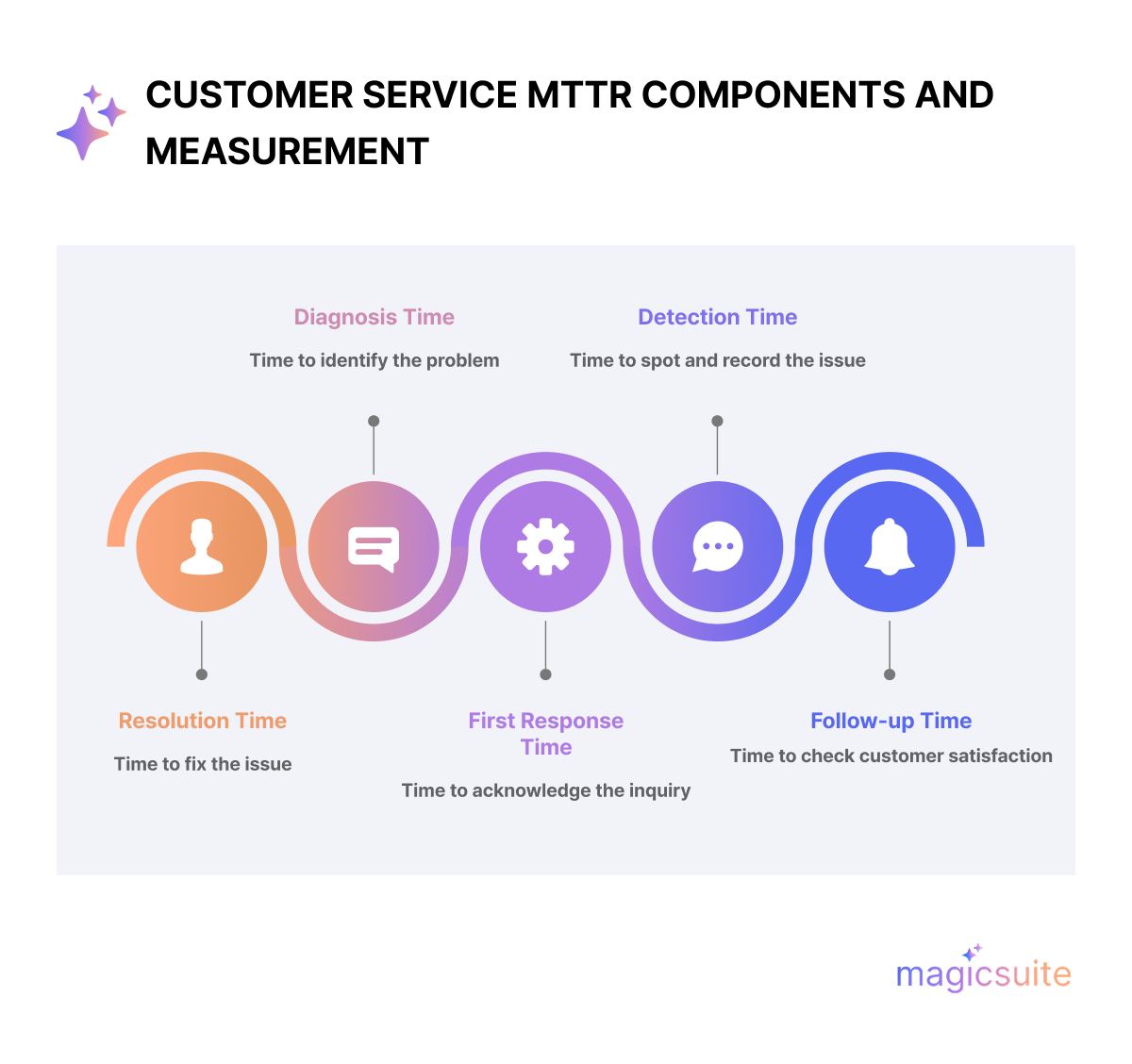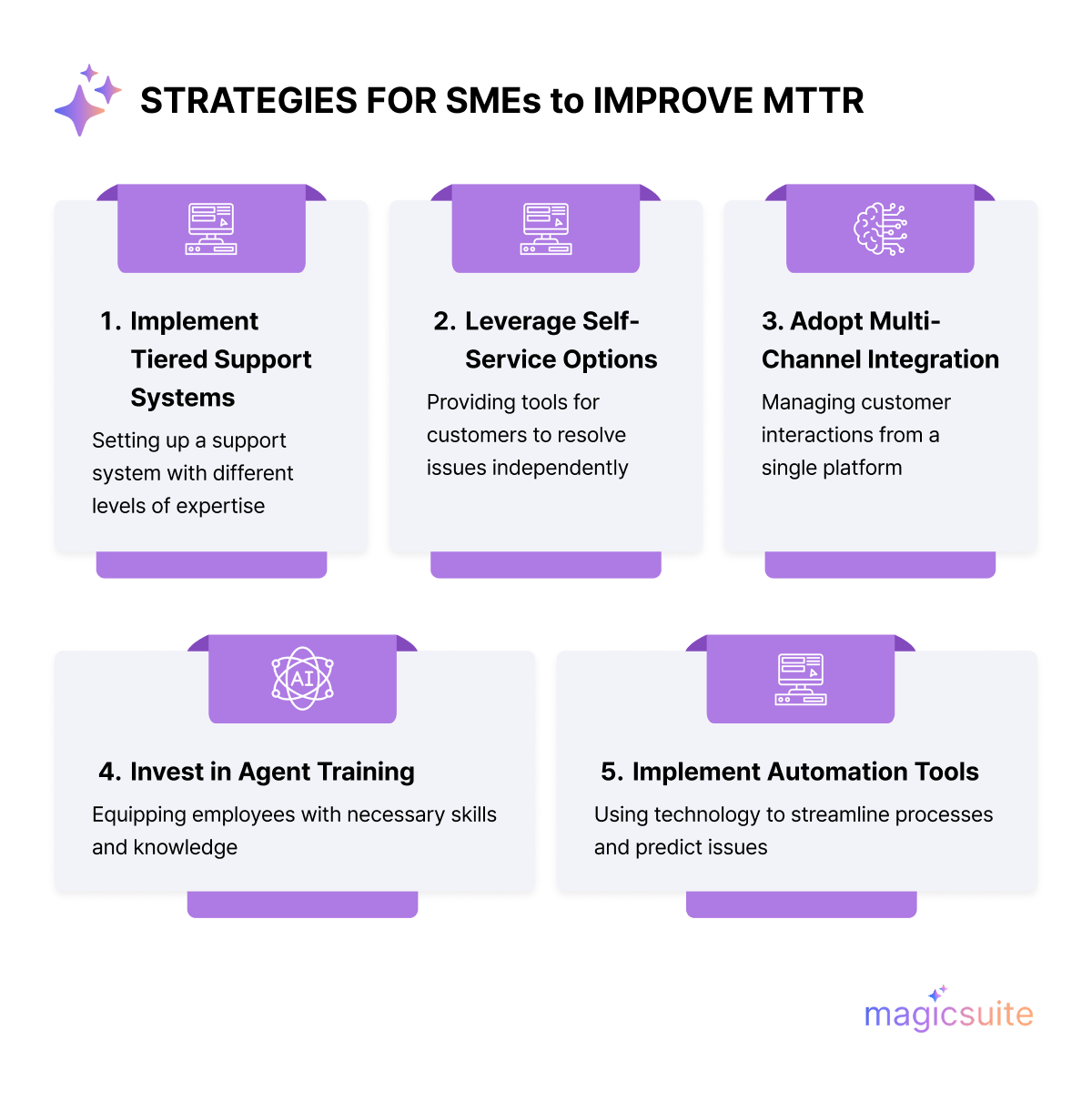Discover how Mean Time to Resolution (MTTR) impacts customer satisfaction, retention, and revenue. Learn why SMEs must prioritize fast issue resolution and how to improve it with proven strategies.

Small and medium-sized enterprises (SMEs) must deliver not only quality products but also exceptional customer service. One of the most critical metrics that reflects the efficiency and effectiveness of a support team is MTTR—Mean Time to Resolution.
But what exactly is MTTR in a customer service context, and why should SMEs prioritize it? This comprehensive guide explores the definition, importance, financial impact, and actionable strategies to optimize MTTR for long-term business success.
Mean Time to Resolution (MTTR) refers to the average time it takes to fully resolve a customer inquiry or issue—from the moment it is reported to the moment it is completely resolved.
Unlike the technical version of MTTR (which focuses on system downtime and repairs), customer service MTTR encompasses the entire support journey, including:
This customer-centric metric reflects the efficiency of your support team and directly correlates with customer satisfaction and loyalty.
According to a HubSpot survey, 90% of customers expect an “immediate” response when they need help—60% define “immediate” as 10 minutes or less. That’s a narrow window to make a lasting impression.
A fast MTTR isn't just a nice-to-have—it's a competitive necessity.

MTTR can vary significantly depending on the industry, issue complexity, and support channels used. However, here are some general benchmarks:
When customer service takes a long time to resolve issues, it can cost a lot more than just money. 61% of customers say that great support means getting their problems solved quickly. So, how quickly a company responds can significantly impact its financial performance and customer retention.
Did you know that 89% of shoppers say a quick response to their first question can influence their buying decision?
On the other hand, if a company takes too long to respond, 52% of customers may decide to stop purchasing from them. For SMEs with narrow profit margins, every delayed resolution is a lost opportunity.
Research shows there’s a strong link between how quickly issues are resolved (MTTR) and how happy customers are. When the time it takes to fix problems goes up, customer satisfaction tends to go down. This is especially true in customer service, where unhappy customers might leave without making a purchase or choose a competitor instead.
First Contact Resolution (FCR) rates, which are closely related to MTTR, average around 70-74% in different industries. Companies that can resolve issues quickly typically spend less on operations, receive fewer support requests, and have more productive team members.

SMEs usually work with limited customer service resources. If it takes too long to resolve issues, team members can get stuck helping the same customer for too long, which means they can’t assist new customers or focus on growing the business.
Almost half (46%) of customers expect to hear back from companies in less than 4 hours, but the average response time is about 12 hours and 10 minutes. SMEs that can consistently respond faster have a big edge over larger companies, which often have more complicated support systems.
88% of customers say that good customer service makes them more likely to buy again. For SMEs that depend on keeping customers for growth, doing well with MTTR means more loyal customers and less money spent on attracting new ones.
In today’s world of social media and online reviews, slow response times can hurt a brand’s image quickly. SMEs, which often don’t have large marketing budgets to fix bad publicity, need to prioritize fast resolution times to keep customers feeling positive about their brand.
Customer service MTTR (Mean Time to Resolution) involves several important time factors:
You can calculate MTTR using this formula:
MTTR = Total Resolution Time ÷ Number of Resolved Cases
For example, if a support team resolves 100 cases with a total resolution time of 2,400 minutes, the MTTR would be 24 minutes per case.
When measuring customer service MTTR, it’s helpful to look at other related metrics:

Using platforms like Freshdesk, SMEs can set up a support system that directs customers to the right expert right away. Here’s how it can work:
Level 1: Simple questions (like password resets or basic info).
Level 2: Technical issues that need specialized knowledge.
Level 3: Complex problems needing senior expertise.
Platforms like MagicTalk offer:
Self-service not only reduces MTTR but also improves customer satisfaction.
Use AI-powered tools to unify all communication channels.
Benefits:
Training employees is crucial for lowering MTTR. SMEs should focus on:
Using marketing automation in customer service can significantly cut down MTTR for routine inquiries. This can include:
Check out: Complete Guide to Ticket Resolution: Metrics & Best Practices
Aside from the strategies outlined above, here are more best practices that you can implement to optimize your MTTR.
1. Establish Clear Response Time Targets
Set specific MTTR goals by channel:
2. Monitor and Analyze Performance Data
Regular MTTR review and analysis enable continuous improvement:
3. Implement Proactive Support Measures
Proactive customer support can significantly reduce MTTR:
4. Foster a Culture of Continuous Improvement
Conduct regular post-incident reviews to learn from each interaction:
Also read: Why SMEs Need AI Chatbots for Customer Service
A good MTTR depends on your industry and support channels, but top-performing teams aim for under 30 minutes. The average across industries is around 24 hours.
By implementing automation, training agents, and using tools like MagicTalk, Zendesk, and Freshdesk, SMEs can streamline resolution processes.
No. First Response Time measures how quickly a company replies, while MTTR tracks the full time to resolution.
Faster resolution times lead to higher CSAT, better FCR, and improved customer loyalty.
MTTR is more than just a metric—it's a mirror reflecting the health of your customer service operations. For SMEs, optimizing MTTR can lead to:
Implementing the strategies outlined in this guide and you will transform your customer service from a cost center into a growth engine.
🚀 Ready to improve your MTTR? Book a free consultation with MagicTalk today!

Luke is a technical market researcher with a deep passion for analyzing emerging technologies and their market impact. With a keen eye for data and trends, Luke provides valuable insights that help shape strategic decisions and product innovations. His expertise lies in evaluating industry developments and uncovering key opportunities in the ever-evolving tech landscape.